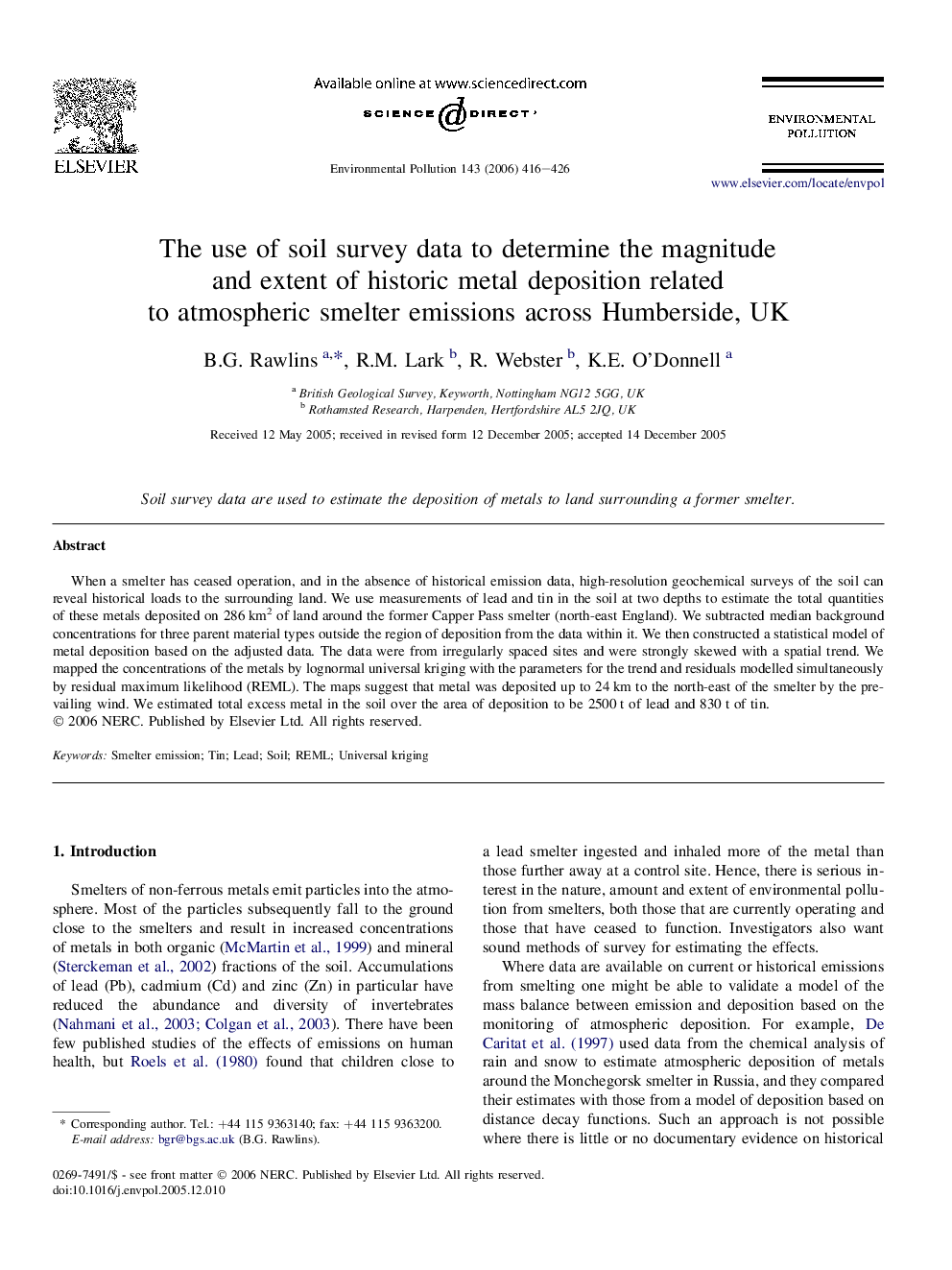| Article ID | Journal | Published Year | Pages | File Type |
|---|---|---|---|---|
| 4427696 | Environmental Pollution | 2006 | 11 Pages |
When a smelter has ceased operation, and in the absence of historical emission data, high-resolution geochemical surveys of the soil can reveal historical loads to the surrounding land. We use measurements of lead and tin in the soil at two depths to estimate the total quantities of these metals deposited on 286 km2 of land around the former Capper Pass smelter (north-east England). We subtracted median background concentrations for three parent material types outside the region of deposition from the data within it. We then constructed a statistical model of metal deposition based on the adjusted data. The data were from irregularly spaced sites and were strongly skewed with a spatial trend. We mapped the concentrations of the metals by lognormal universal kriging with the parameters for the trend and residuals modelled simultaneously by residual maximum likelihood (REML). The maps suggest that metal was deposited up to 24 km to the north-east of the smelter by the prevailing wind. We estimated total excess metal in the soil over the area of deposition to be 2500 t of lead and 830 t of tin.
